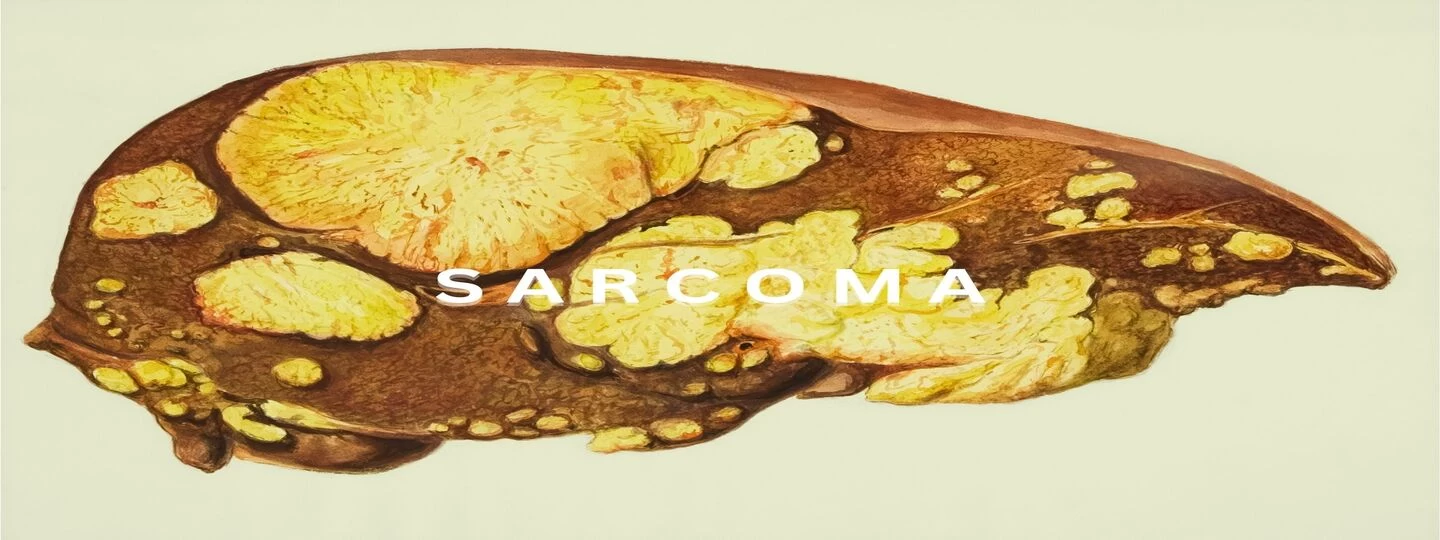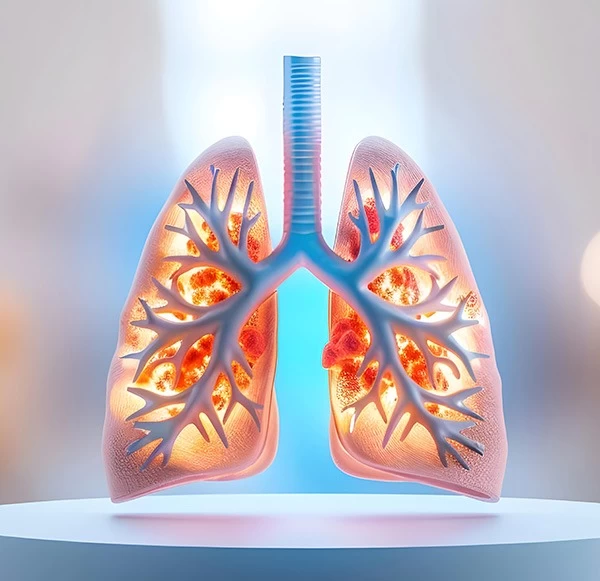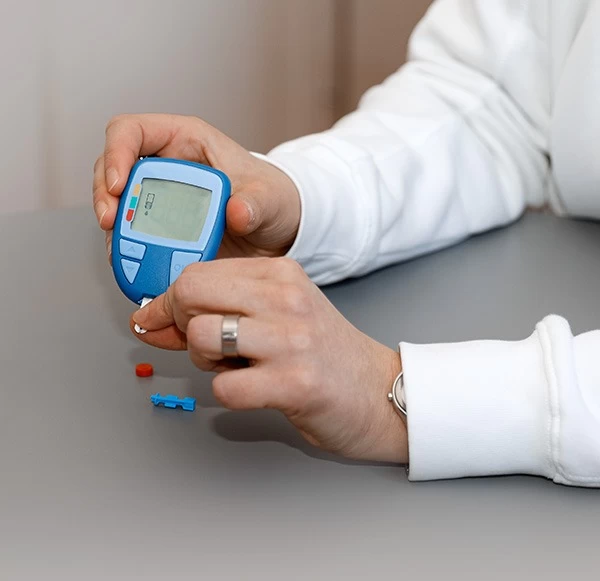- Email Us

In the vast landscape
of cancer, sarcoma is the quiet rebel—often misunderstood as it is rare, and
elusive. Sarcoma
defies convention, in contrast to its more infamous cousins. It doesn't
differentiate based on age and can develop from the soft tissues or bones,
hiding in blood vessels, muscles, or nerves. Indeed, it is becoming more
prevalent in the lives of Gen Z and millennials, surprising them with its
subtle symptoms and underlying causes.
What
is Sarcoma?
Sarcoma is not your everyday
cancer—it’s a rare and often overlooked adversary that quietly emerges from the
body's foundational structures. When cancer begins in these soft tissues, it’s
known as soft tissue
sarcoma, a diverse group with over 50 subtypes. Among them, Ewing sarcoma and synovial sarcoma are
more commonly diagnosed in India, where awareness and early detection remain
critical challenges. Bone sarcomas, though less frequent, are equally
formidable.
Despite their complexity,
sarcomas make up only 0.2%
of all adult cancer diagnoses and about 15% of childhood cancer cases,
making them rare but impactful.
Sarcoma may be rare, but its reach is wide and its impact
profound. As research deepens and awareness grows, understanding this silent
challenger is the first step toward empowering patients, families, and
healthcare providers in the fight against it.
Types
of Sarcoma:
A broad category of malignancies
in soft tissue and/or bone is referred to as sarcoma. Sarcoma has around 70
recognized subgroups.
Sarcomas of the bones
Cancer that originates in the bone is known as primary bone sarcoma. People
under the age of 35 are diagnosed with more than one-third of bone sarcomas.
Children are diagnosed with several.
Primary bone sarcomas come in the
following types:
· Osteosarcoma(most
prevalent)
· Chondrosarcoma
· Chordoma
· Sarcoma
Ewing's
· Fibrosarcoma
Metastatic bone cancer, as opposed to primary bone cancer, begins elsewhere
(such an organ) and spreads to the bone. This cancer can take many different
forms and frequently spreads from your breast, prostate, kidney, lung, or
thyroid.
When cancer from a distant organ
spreads to your skeleton, it can lead to structural issues that can impair your
ability to function and cause pain.
Sarcomas of soft tissues
Your body's muscles or other connective tissues are where soft tissue sarcomas
start. The majority of soft tissue sarcomas occur in adults, in contrast to
bone sarcomas. Rhabdomyosarcoma is one of the sarcoma forms that primarily
affects children.
Soft tissue sarcomas come in the
following types:
· Angiosarcoma
· Tumors of
little spherical cells that are desmoplastic
· Tumor of
the gastrointestinal stroma (GIST)
· Leiomyosarcoma
· Liposarcoma
· Malignant
tumor of the peripheral nerve sheath
· Schwannoma
that is malignant
· Sarcoma
myxofibrosa
· Rhabdomyosarcoma
· Sarcoma
of the synovium
· Pleomorphic
undifferentiated sarcoma
Signs
and symptoms of sarcoma:
According to medical
professionals, the location of the tumor determines the symptoms of sarcoma,
and some may not exhibit any symptoms at all in the early stages. While some
sarcomas don't hurt until they get big enough to push on an organ, others may feel
like a lump beneath your skin. Nonetheless, a few signs could be:
· A lump
that may or may not hurt
· Bone
pain
· Unexplained
weight loss
· Pain
in an extremity
· Trouble
moving your arm and leg, or any limited range of motion
· Stomach
ache
What
Causes Sarcoma?
Sarcomas form when immature
bone or soft tissue cells undergo changes in their DNA, transforming into
cancer cells that grow uncontrollably. In healthy cells, DNA acts like an
instruction manual—telling cells when to grow, divide, and die. But in sarcoma
cells, these instructions become corrupted. Instead of following a regulated
cycle, the mutated DNA tells the cells to multiply rapidly and avoid natural
cell death, leading to an accumulation of abnormal cells.
These rogue cells can form a
mass known as a tumor, which may invade and destroy nearby healthy tissues. If
left untreated, sarcoma cells can break away from the original site and travel
through the bloodstream or lymphatic system to other parts of the body—a
process known as metastasis. Once sarcoma becomes metastatic, it becomes
significantly more challenging to treat.
While researchers continue to
investigate the root causes of these DNA changes, the exact trigger for sarcoma
remains unknown. What is clear, however, is that early detection and timely
treatment are crucial in managing this rare but aggressive form of cancer.
Diagnosing Sarcoma: Precision Tools for Early
Detection
Diagnosis test begins with a
thorough history and a physical examination of the patient. Which is further
followed by advanced imaging and diagnostic procedures to provide precise
characterisation and information of the condition. Mahajan Imaging & Labs is a trusted choice for these critical
diagnostic tests due to its state-of-the-art technology, expert team, and
patient-centric approach. Below is an overview of the diagnostic process for
sarcoma and why Mahajan Imaging & Labs is the preferred diagnostic center
for these services:
· X-ray: X-rays take photos of your
body's soft tissues and bones using tiny doses of radiation.
· Magnetic resonance imaging (MRI): An MRI produces sharp images of your
internal organs using radio waves, big magnets, and a computer. If an X-ray
reveals something abnormal, your doctor could prescribe an MRI to obtain more
comprehensive images. Mahajan Imaging & Labs offers advanced 3T MRI technology for enhanced imaging precision.
· Bone scan: To
detect bone diseases like bone sarcoma, your doctor will inject a tiny quantity
of radioactive material into your body.
· Computed tomography (CT) scan: A CT scan creates cross-sectional
representations of your body by combining several X-ray images using computers.
Mahajan Imaging & Labs provides 128/64/16-slice CT scans, including Dual Energy Spectral CT, for
superior diagnostic accuracy.
· Biopsy: Biopsy is an essential procedure where small tissue sample is
removed from the tumor. A pathologist examines it under a microscope to confirm
if it's sarcoma and identify its type. Mahajan Imaging & Labs employs
CT-guided robotic biopsy techniques to ensure precision and minimize
complications.
· PET
CT: This shows
your body parts where glucose levels are traced higher, which may suggest a
tumor. Mahajan Imaging & Labs is equipped with 128-Slice Digital PET-CT, setting a benchmark in precision
oncology diagnostics.
Sarcomas are a rare form of cancer affecting soft tissues and
bones. Early detection
saves lives—schedule your diagnostic test with Mahajan Imaging & Labs today.




